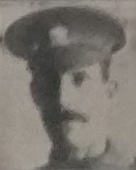Proudly displayed at the far end of the Fishguard Market Hall is a newly refurbished framed war memorial containing portrait photographs of eighty one men of north Pembrokeshire who fell during the Great War. These men are commemorated on war memorials scattered around the north of the county. It is not a comprehensive list of all of the men from this picturesque part of the county who fell, but is probably due to the fact that these photographs were the only ones collected for the project at the time it was created.
ROLL OF HONOUR
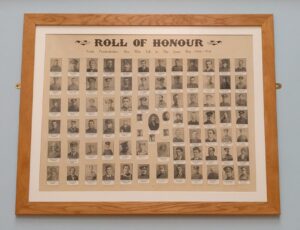
NORTH PEMBROKESHIRE MEN WHO FELL IN THE GREAT WAR 1914-1918
Percy George Adolph, Private, 13150, Welsh Regiment. Percy had been born at Angle, and was the only son of George and Mary Adolph. The family later moved to the Continental, Goodwick. He enlisted at Haverfordwest into the Army, and was posted to the 1st Battalion, Welsh Regiment. The battalion was stationed in India at the outbreak of war, and was recalled to Britain, where it joined 84 Brigade, 28th Division on 22 December 1914, at Hursley Park. During January 1915 it moved to France, landing at Le Havre and moved to the Western Front, where it saw its first major action during the Second Battle of Ypres. The 1st Welsh landed on 18 January and spent their first night in France in a cotton shed in the Docks at Le Havre, before entraining the following day for Hazebrouck, and marching to Merris. The 1st Welsh then saw their first taste of the front line trenches at Hill 60. After a spell in the line, they rested a few days before moving back into the line at the Bluff on the night of 15 February 1915. The trenches were in an awful state, and not deep enough for safety and during the next two days, the 1st Welsh lost 28 men killed and a further 29 wounded while bringing the trenches up to standard. Percy was killed here on 17 February 1915. He was just 18 years old and, as his grave was lost in further fighting in the area, he is commemorated on the Ypres (Menin Gate) Memorial, Belgium.
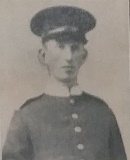
James Barrington, Sergeant, 28199, Welsh Regiment. James was the Husband of Elizabeth Mary Barrington, of Upper Houlse, Castle Morris. He enlisted at Haverfordwest into the 18th Battalion, Welsh Regiment, which was attached to 119 Brigade, 40th (Bantam) Division. The Division moved to France during June 1916, and moved to the front near Loos. Late in 1916 they moved south to the Somme, and fought at the Battle of the Ancre, and remained in the area over the winter. In March 1917 the Germans withdrew to the Hindenburg Line, and the 40th Division was one of the Divisions that followed the withdrawal. James was wounded during this period, and returned to Britain for treatment. He died of his wounds on 31 August 1917, aged 27, and is buried at Mathry Church Cemetery.
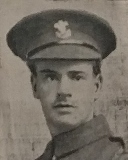
James Bateman, Private, 16170, Welsh Regiment. James was born the son of William and Martha George Bateman, of Llanwnda. He resided in Fishguard at the outbreak of War. He enlisted at Ferndale into the 8th Battalion, Welsh Regiment, who were the Pioneer Battalion to the 13th (Western) Division. James fought at Gallipoli with the Division, where they suffered heavy losses, until being finally evacuated during 8-9 January 1916. They manned the trenches at the Suez Canal defences for several weeks, before moving to Mesopotamia on 12 February 1916, marching to attempt to relieve the Siege of Kut. After several battles, the Division took part in the capture of Baghdad before pushing North through the country, and it was here that James was killed in Action, on 23 April 1916, aged 21. He is commemorated on the Basra Memorial, Iraq.
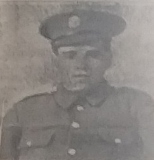
George Batin, Private, 22841, King’s Shropshire Light Infantry. George was born at Fishguard, the son of Thomas and Lettice Batin, later of Trewrach, Dinas Cross. He enlisted at Fishguard into the 1st Battalion, King’s Shropshire Light Infantry, which was attached to 16 Brigade, 6th Division. The Division was in Ireland at the outbreak of War, and was shipped to France, landing at St. Nazaire on 10 September 1914. The BEF was still fighting the desperate rearguard action on the Aisne, and so the 6th Division was rushed to support them there, before moving North to Flanders. They next fought at Hooge, before being brought south to the Somme. By now, due to the tremendous amount of casualties, George had been attached to the 2nd Battalion, Welsh Regiment, in the 1st Division, and they were in the thick of the fighting, fighting at Pozières, when George was mortally wounded. He was brought back to the Casualty Clearing Station at Albert, but Died of Wounds on 27 July 1916, aged 31. He is buried in Albert Communal Cemetery Extension, France.
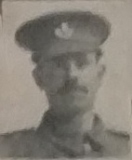
Griffith Batin, Ordinary Seaman, J/52871, Royal Navy. Griffith was the younger brother of George (see above), the son of Thomas and Lettice Batin. He was born at Fishguard, and enrolled into the Royal Navy, serving aboard H.M.S. ‘Mersey’, which was a ‘Humber Class’ Monitor, used as an offshore gun battery by the Royal Navy, especially designed as a low draught ship, suitable for service in coastal waters and rivers. Griffith Died of Disease at Tanzania on 2 November 1916, and is buried at Dar Es Salaam War Cemetery, Tanzania.
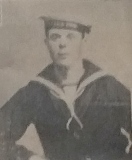
Robert Frederick Bishop, Private, 17141, Coldstream Guards. Robert was the son of John Henry and Emma Bishop, of Dew Street, Haverfordwest. He worked as a fish merchant at prior to the war and was well known at Haverfordwest, Milford and at Goodwick. He enlisted at Haverfordwest on 8 November 1915 and was posted to the 1st Battalion, Coldstream Guards, which was attached to the 1st (Guards) Brigade, 1st Division and had been in France since August 1914. The battalion joined the Guards Division on 25 August 1915 and took part in the Battle of Loos on 25 September 1915. The Guards remained in the area during the coming months, where they also fought in the subsequent action of Hohenzollern Redoubt. In July 1916 the Division moved to the Somme and fought at the Battle of Flers-Courcelette, and then at the Battle of Morval, capturing Lesboeufs Village. Robert was killed in action by shellfire on 29 September 1916. He was 26 years old, and was buried in Guard’s Cemetery, Lesboeufs, France by his comrades.
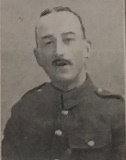
Richard Eldon Bush, Flight Lieutenant, Royal Naval Air Service. Richard was born on 16 June 1891, the son of Philip Wathen Bush and Maria Louisa Bush, of The Old Manor House, Keynsham Bristol. Richard learnt to fly the Caudron Biplane, at the Royal Naval Flying School, Eastchurch, gaining his Aviators Certificate on 20 August 1915. He was one of the first airmen to be based at Fishguard Naval Air Station RNAS, and on his first flight there took off in a Sopwith Baby seaplane, N1033, on the morning of 22 April 1917 on a test flight, carrying a full load of bombs, but sadly the seaplane failed to gain height at take off and struck power cables, which sent it crashing into the cliff face. At great risk to himself, a soldier of the King’s Liverpool Regiment who had been watching, pulled Richard out of the burning wreckage, and he was taken to the nearby Bay Hotel, where he was treated by a local Doctor. Sadly Richard succumbed to his terrible injuries, and died on 24 April 1917. He was 26 years old, and was buried with full military honours at Keynsham Cemetery, England.

Arthur William Charles, Private, 45716, Welsh Regiment. Arthur was the son of John and Phoebe Charles, of Llanrhian. He enlisted at Fishguard into the 20th Battalion, Welsh Regiment, which was designated the 3rd Rhondda Reserve Battalion. Arthur became ill while training, and died in hospital at Bangor on 6 August 1916, aged 19. He is buried at Mathry (Rehoboth) Congregational Chapelyard.
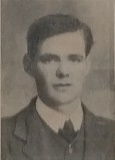
Rowland Griffith Daniel, Sergeant, 290291, Welsh Regiment. Rowland was born in 1895, the son of Thomas and Elizabeth Daniel, of The Mount, Newport. He enlisted at Cardiff into the 7th Battalion, Welsh Regiment, which was formed as a Cyclist battalion at Newport Road, Cardiff on 4 August 1914. The Battalion remained in the U.K. for the remainder of the war, stationed at Berwick and Montrose, and was based at Seaton Carew in early 1917. Rowland took ill and Died on 27 March 1917, aged 22. He is buried at St. Mary’s Churchyard, Newport.
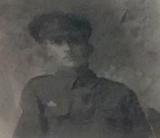
David John Davies, Mate, Mercantile Marine. David was the son of Henry Morgan Davies and Elizabeth Davies (nee Richards), of White Gate, Trecwn. He enlisted into the Mercantile Marine, and was a Mate aboard SS Holmtown, a London registered Steamship. On 6 February 1918, Holmtown was sailing from Rouen for Penarth Docks in ballast, when she was torpedoed by the German submarine UB-59 east of the Shambles Light Vessel, and sank with the loss of all hands. David was 19 years old, and is remembered alongside his fellow crewmen on the Tower Hill Memorial, London. David doesn’t seem to be commemorated locally.
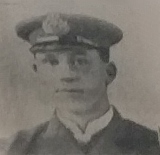
Gwynne Havard Davies, Private, STK/1431, Royal Fusiliers. Gwyn was born in Newport, the son of Evan and Maria Jemima Davies. The family later resided at Gorlan, Fishguard. He worked at the Bute Estate Office at Cardiff prior to the war and enlisted there into the army. He was posted to the 10th Battalion, Royal Fusiliers, which was attached to 11 Brigade, 37th Division. The Division fought at the diversionary attack on Gommecourt during July 1916 and then at the Battle of the Ancre. After spending the winter on the Somme, it moved north to Arras, and fought in the Battle of the Scarpe, where it took the strongly defended town of Monchy-le-Preux. Gwyn was killed in action during the Battle, on 11 April 1917, and is commemorated on the Arras Memorial, France. Gwyn is not commemorated at Fishguard.
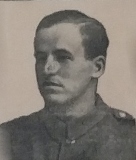
Herbert Thomas Davies, J/28606, Ordinary Seaman, Royal Navy. ‘Tom’ was born at Carew in 1897, the son of Mr. and Mrs. Benjamin Davies. The family later moved to Glanteifon Cottage, St. Dogmaels. Herbert served aboard the mighty Battleship, HMS Queen Mary which was launched in 1912, joining the 1st Battlecruiser Squadron of the Grand Fleet. At the outbreak of the Great War, the Queen Mary was in the North Sea, and took part in the successful Battle of Heligoland Bight on 28 August 1914. During the first two months of 1915 the Queen Mary undertook a refit at Portsmouth, before again rejoining the Grand Fleet. During May, 1916 the Grand Fleet faced what was to become their sternest test of the war. Information had been received that the mighty German High Seas Fleet were assembling, and on 30 May the Grand Fleet put to sea. During the following afternoon of 31 May 1916, the great fleets sighted each other, and began what was to be the greatest Naval Battle in History, with the Queen Mary in the thick of the action. After exchanging heavy salvoes with their German opponents, the Queen Mary suffered direct hits from the Seydlitz and Derfflinger, and blew up with the loss of 1,266 lives. Herbert was one of these poor souls to lose his life in the tumultuous explosion caused by the direct hits, and so he is remembered on the Plymouth Naval Memorial in Devon. He was just 18 years old. Tom is not commemorated on the St. Carew Memorial.
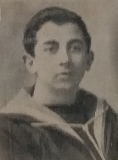
James Davies, Private. The memorial shows this photograph of James Davies, of Pontfaen. He bears the cap badge of the Welsh Regiment, but no man of that name from the area was killed during the war while serving with the Welsh. Only three men from Pontfaen fell during the war, one of whom was James Jones, who had served with the Welsh Regiment before being transferred to the Royal Welsh Fusiliers. There are several small naming mistakes on these photographs, so is James Davies really James Jones (below)?
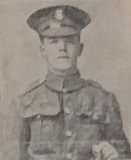
James Jones, Private, 204719, Royal Welsh Fusiliers. James was the son of Thomas and Mary Jones, of Penverdir Isaf, Pontfaen. He was a Postman prior to the war, and enlisted into the Welsh Regiment at Carmarthen on 8 April 1916. James landed in France on 20 August 1917, and was posted to the 17th Battalion, Royal Welsh Fusiliers, which was attached to 115 Brigade, 38th (Welsh) Division. The battalion had been moved to positions near Armentieres when James joined them, after having taken part in heavy fighting at Ypres. James was struck by shell fragments in his thigh while in the trenches on 3 March 1918. He died of his wounds at 34th Casualty Clearing Station later that day, and is buried at Merville Communal Cemetery Extension, France.
Thomas Henry Davies, Private, 60663, Welsh Regiment. Thomas was born at Jordanston Hill, and enlisted at Cardiff into the Welsh Regiment. He was posted to the Mediterranean, where he joined the 24th Battalion, Welsh regiment. The battalion had been formed in 1917 by the merging of the Pembroke and Glamorgan Yeomanry, and was attached to the 231 Brigade, 74th (Yeomanry) Division. The Division had formed in Egypt in January 1917 and had fought through the Palestinian Campaign, at the Battles of Gaza and the Battle and capture of Jerusalem. Thomas was killed in action during the Third Battle of Gaza, on 27 December 1917. He is commemorated on the Jerusalem Memorial, Israel.
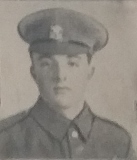
William John Davies, Deck Hand, 15108DA, Royal Navy. William was born at Fishguard on 31 October 1889, the son of John and Martha Davies, of Sea View, Penwallis. He served in the Royal Naval Reserve, aboard HM Trawler Gambri. The Gambri was lost with all hands off the British Isles on 18 January 1918, and aboard her was William, who was 28 years old. He is commemorated on the Plymouth Naval Memorial, Devon.
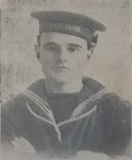
William Owen Davies, Sergeant, W/902, Royal Field Artillery. William was the son of Owen and Harriet Davies, of Fishguard. He enlisted at Haverfordwest into the Royal Field Artillery, and was sent to France where he was posted to ‘A’ Battery, 122nd Brigade, Royal Field Artillery, which was attached to the 38th (Welsh) Division. William came through the bloodbath of Mametz Wood unscathed, unlike many others of the Division, and the Division was sent north to Ypres to take part in the Passchendaele Offensive. William was killed in action during the build up to the Battle of Pilckem Ridge, on 27 July 1917, aged 28, and is buried at Canada Farm Cemetery, Belgium.
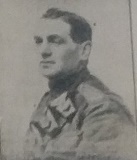
Edward Francis Drewitt, Private, 307170, Lancashire Fusiliers. Edward was born at Holt, Wiltshire in 1880, the son of Jacob and Mary Ann Drewitt. He resided at St Mary’s Street, Newport prior to the war with his wife Sarah, and son Howard. At the outbreak of war Edward enlisted at Newport, into the army, and was posted to the 2/8th Battalion, Lancashire Fusiliers, part of 197 Brigade, 66th Division. The Division landed at Havre on 28 February 1917, and moved to the Flanders sector. Edward had only been in Flanders a few weeks when he was seriously wounded. He was brought back to the Base Hospital at St. Omer, but Died of Wounds there on 17 April 1917, aged 37. He is buried in Longuenesse (St. Omer) Souvenir Cemetery, France. After Edwards’s death, Sarah moved back to Sutton Road, Somerton, Somerset.
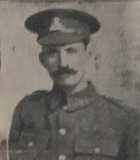
Harry Howard Dyke, Private, 7388, Devonshire Regiment. Harry was the son of Henry and Sarah Dyke, of Serlo Road, Gloucester. He married in 1909, and resided with his wife Isabella Dyke, at 5, Bearland Villas, Gloucester. Harry then joined the Fishguard Postal Staff prior to the war. He was probably an army reservist, and enlisted at Gloucester at the outbreak of war into the 1st Battalion, Devonshire Regiment, which was attached to 8 Brigade, 3rd Division. Harry landed in France with the battalion on 22 August 1914. The complete Division then moved to the Belgian frontier, and fought during the opening Battle of Mons, and in the epic retreat south to the Marne, where the German Offensive was stopped. They followed the German withdrawal to the Aisne, where they met them in battle, and stopped the advance on Paris. The Division then moved north to Flanders, and took part in the Battle of La Bassée, and at the Battle of Messines, which were a prelude to the First Battle of Ypres. Harry was killed in action here on 17 October 1914, aged 29. He has no known grave, and is commemorated on the Le Touret Memorial, Richebourg L’Avoue, France.
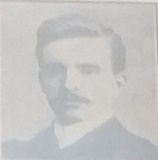
Arthur Edwards, Private, 4943, Royal Welsh Fusiliers. Arthur was born in Newport, the son of James and Sarah Edwards, of Fern Hill. He enlisted at Pontypridd on 7 April 1913 into the Royal Welsh Fusiliers. At the outbreak of war Arthur was posted to the 1st Battalion, Royal Welsh Fusiliers, which was attached to 22 Brigade, 7th Division. The battalion had been rushed back from Garrison duty in Malta prior to the war and landed at Zeebrugge on 6 October 1914, but were too late to prevent the city falling, and so moved south to Ypres, where they fought at First Ypres. During the spring of 1915 the Division fought at the Battle of Neuve Chapelle and the Battle of Aubers Ridge, before being embroiled in the Battle of Festubert, which began on 15 May 1915. Arthur was killed in action at Festubert on 16 May 1915, aged 22. He is commemorated on the Le Touret Memorial, France.
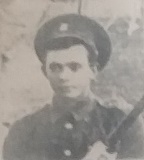
Arthur Ethelred Evans, Private, 260436, Gloucester Regiment. Arthur was born at Llanddewi in 1885, the son of Thomas and Margaret Evans. His parents later resided at New House, Llanfallteg. He married Edith Maud James, of Victoria Avenue, Fishguard in 1908 and the couple had three children together. Arthur enlisted at Fishguard into the South Wales Borderers following the outbreak of war. Arthur was later transferred to the 12th (Bristol City) Battalion, Gloucestershire Regiment, which had been raised at Bristol on 30 August 1914 and by June 1915 had moved to Wensleydale, joining 95 Brigade, 32nd Division. The Division landed in France on 21 November 1915, and fought on the Somme later in 1916. During October 1917, the 12th Gloucesters were fighting at Ypres, taking part in the Battle of Passchendaele. On 1 October 1917 the battalion moved into the front line at Meteren to relieve the 11th Battalion, West Yorkshire Regiment, and spent the following day consolidating the trenches. It was while carrying out this work that Arthur was killed in action, when the battalion came under bombardment by German gas shells on 2 October 1917. He was 32 years old, and is commemorated on the Tyne Cot Memorial, Belgium.
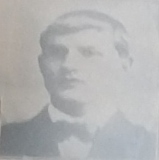
Edgar Evans, Private, 54514, Welsh Regiment. Edgar was born at Mathry in 1886, the son of James and Theodosia Evans. He was a farm labourer at Fishguard prior to the war, and had married Phoebe, of Cambrian Inn, Fishguard. Edgar enlisted at Fishguard into the army, and was posted to the 19th Battalion, Welsh Regiment, the Pioneer Battalion of the 38th (Welsh) Division. The Division arrived in France at the end of November 1915 and was stationed around Armentieres, before moving South to the Somme in June 1916. They famously captured Mametz Wood during July 1916 and suffered terrible casualties, which necessitated them being removed from the Battle and sent north to Ypres to recover. Edgar was mortally wounded at Ypres, and was brought to No. 46 Casualty Clearing Station at Mendinghem, where he died of Wounds on 25 May 1917, aged 30. He is buried in Mendinghem Military Cemetery, Belgium.
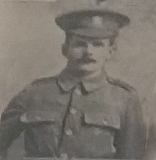
Edwin Evans, Gunner, 725752, Royal Field Artillery. Edwin was born in Mathry, the son of William and Maria Evans. The family later resided at 5, Vergam Terrace, Fishguard. He enlisted at Carmarthen into the Royal Field Artillery, and was posted into ‘B’ Battery, 98th Brigade, Royal Field Artillery, which was attached to the 22nd Division. The Division was in France during September, 1915 but were soon to embark at Marseilles for Salonika, arriving by 13 December 1915. They remained there for the duration of the War, and Edwin Died there of sickness on 19 October 1917, aged just 23. He is buried in Mikra British Cemetery, Kalamaria, Salonika.
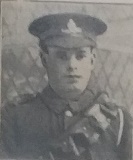
Henry Stephen Evans, Private, 46471, Welsh Regiment. Henry was the son of Henry and Martha Evans, of 14, Plasygamil Road, Goodwick, and the husband of Elizabeth Evans, of Cwmbrechfa, Llanycefn, Clynderwen. He enlisted at Fishguard into the army, and was posted to France to join the 9th Battalion, Welsh Regiment, which was attached to 58 Brigade, 19th (Western) Division. The Division had been in France since July 1915, and had fought at the Battle of Loos. In 1916 it gained a high reputation during the Somme offensive, and spent the winter of 1916/17 on the Somme. Henry was killed during an attack by the 9th Welsh on 2 March 1917, on a portion of the trench system north of Puisieux, called Knife and Fork Trench. He was 26 years old, and is commemorated on the Thiepval Memorial, France.
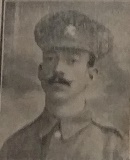
James Harries Evans, Private, 9882, Royal Fusiliers. James was born in Mathry, the son of John and M. M. Evans. The family later resided at Drim, Goodwick and James became a teacher at Fishguard Council School. He enlisted at Fishguard into the army, and was posted to the 13th Battalion, Royal Fusiliers, part of 111 Brigade, 37th Division. The Division fought at Gommecourt and the Ancre during the Somme offensive, before moving to Arras, where they took the village of Monchy-le-Preux. It was during the Second Battle of the Scarpe that James was killed in Action, on 25 April 1917, aged just 21. He is commemorated on the Arras Memorial, France.
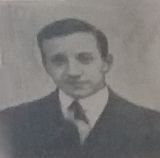
John Llewellyn Evans, Gunner, 188094, Royal Field Artillery. John was the son of David and Martha Evans, of Oxford House, Goodwick. He served with the 98th Battery, Royal Field Artillery, which was attached to the Indian Army. Little is known of John, but he died in India on 24 July 1917, aged 31. He is buried in Nowshera Military Cemetery, which is now in Pakistan, but is officially commemorated on the Delhi Memorial (India Gate), India.
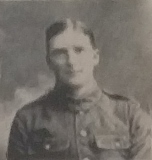
John Martin Fitzmaurice, Private, 13856, King’s Shropshire Light Infantry. John was born in Birmingham on 10 October 1888, the son of Edward and Ellen Fitzmaurice. Edward worked for the GWR, and had moved with Ellen to 37, New Park St., Castlefields, Shrewsbury after 1901. John followed in his father’s footsteps, working for the GWR at Fishguard Harbour for several years prior to the war, and lodged with his sister Mary and her husband Frederick Charles Webb at 17, Heol Dyfed. John had possibly been a reservist with the Welsh Regiment, but had enlisted at Shrewsbury into the 1st Battalion, King’s Shropshire Light Infantry. The battalion was attached to 16 Brigade, 6th Division, and moved to France on 10 September 1914, and had reinforced the BEF on the Aisne, before moving to Flanders. Here they took part in the action of Hooge during June, 1915, and in 1916 moved to the Somme, where the Division fought at the Battle of Flers-Courcelette, the Battle of Morval and the Battle of Le Transloy. The following year saw them at Arras, where they fought at the Battle of Hill 70. John was killed here on 26 April 1917, aged 28. He is buried at Vermelles British Cemetery, France.
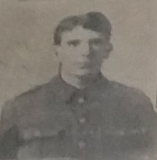
Rhys Edward Francis, Third Engineer, Mercantile Marine. Rhys was born at Merthyr Tydfil, the son of John and Elizabeth Francis. He moved to Fishguard where he married Mary Francis (nee Miles), of Awelfan, Fishguard. Rhys served in the Mercantile Marine as Third Engineer aboard the S.S. Paddington, a London registered cargo steamer. On 21 July 1917, Paddington was on voyage from Cartagena to Britain with Admiralty cargo and passengers, when she was torpedoed and sunk by the German submarine U-96, 250 miles west of Fastnet, with the loss of 29 lives. Rhys was 26 years old when he died that day, and is commemorated on the Tower Hill Memorial, London.
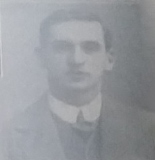
David William Griffiths, Private, 33986, South Wales Borderers. David was born in Fishguard in 1885, the son of William and Mary Griffiths. He enlisted at Haverfordwest on 17 August 1914 into the South Wales Borderers, and was posted to the 4th Battalion, South Wales Borderers. David served with the battalion at Gallipoli from 10 July 1915, where it was attached to 40 Brigade, 13th (Western) Division. David was shot in the hand at Gallipoli and was evacuated off the peninsula for treatment. After recovering David was transferred to the 1st Garrison Battalion, Royal Welsh Fusiliers. On 20 December 1916 he was posted to France, joining the BEF, and transferred to the 14th Battalion, Royal Welsh Fusiliers, which was at Ypres, attached to 113 Brigade, 38th (Welsh) Division. The Division had moved there from the Somme in the summer of 1916, taking up positions at Boesinghe, along the Yser Canal. On 31 July 1917 the Division took part in the Passchendaele Offensive, capturing the strongly fortified Pilckem Ridge, before taking part in the Battle of Langemarck. David was badly wounded there by shell fragments, and was sent to the 47th Casualty Clearing Station at Dozinghem, where he died of Wounds on 30 August 1917, aged 32. He is buried there, at Dozinghem Military Cemetery, Belgium.
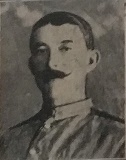
Gwynfred Ellis Griffiths, Private, 43837, Wiltshire Regiment. Gwynfred was the son of Joseph and Anne Griffiths (nee Morris), of The Post Office, Croesgoch, Letterston. Prior to the war, he lived with his wife, Alicia Griffiths, at Wedgwood House, Llandeilo. He enlisted at Ammanford into the army, and was posted to France, where he joined the 1st Battalion, Wiltshire Regiment, which had been there since the outbreak of war, attached to 7 Brigade, 3rd Division. Gwynfred probably joined the battalion in 1916, on the Somme. They fought throughout the Battle of the Somme, and at the end of October 1916 moved to Ploegsteert. In 1917 the Division fought through Third Ypres, at Messines and Pilckem, and then moved to Givenchy then Bullecourt. They were in positions north west of Bapaume when the German Spring Offensive hit on 21 March 1918. After suffering heavy casualties, they moved to Flanders at the end of March, but were again hit by the German Offensive in Flanders. The Division suffered terrible casualties, and moved to the Aisne to rebuild. Again, they were hit by a German Offensive on the Chemin des Dames at the end of May, and again they held firm. On 21 June 1918 the Battalion transferred to 110 Brigade, 21st Division, and they fought with the Division during the drive through the Hindenburg Line. Gwynfred was killed in action on 8 October 1918, aged 39. He is buried at Bois-Des-Angles British Cemetery, Crevecoeur-Sur-L’escaut, France. His brother Theophilus also fell.
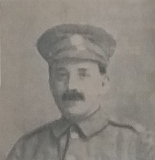
Thomas Owen Harries, Private, 1955, Australian Infantry. Thomas was born at Fishguard in 1893, the son of Mrs. Winifred Harries, 63, High Street, Fishguard. He migrated to Australia in 1913, working as a Farmer, and enlisted there at Liverpool, New South Wales on 23 January 1915. He joined the 5th Reinforcements for the 13th Battalion, which embarked at Sydney aboard HMAT Kyarra on 13 April 1915 bound for Gallipoli via Egypt. Thomas joined the Battalion on Gallipoli on 13 July 1915, and was badly wounded at the Battle of the Nek on 9 August 1915. A Hospital Ship brought him, along with many others, back to Lemnos to the Army Hospital, but he Died of Wounds there on 23 August 1915 aged 22. He is buried in Portianos Military Cemetery, Lemnos.
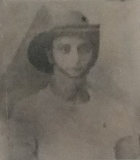
John Llewellyn Henton, Company Quartermaster Sergeant, 113, Welsh Guards. John was the son of ex P.C. John Henton and Ann Henton, of Rosebush, Maenclochog. He enlisted at Fishguard into the Grenadier Guards on 22 February 1911, and served with the regiment until transferring to the newly formed Welsh Guards in February 1915. John would have then served with the Welsh Guards as part of 3rd Guards Brigade, Guards Division, at the Battle of Loos and during the Somme Offensive in 1916, but returned home wounded on 29 October 1916. He was discharged from the army as unfit on 17 December 1916 and died at St Bartholomew’s Hospital, London on 6 March 1917, aged 25. He is buried at Wandsworth (Earlsfield) Cemetery, England.
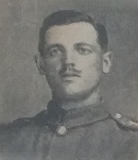
Francis Henry Howells, Sapper, 241786, Royal Engineers. Francis was born on 10 December 1890, the son of Mark and Mary Howells, of Puncheston, Fishguard. He married Rose Ellen Howells, of 33, Manchester Road, Swindon, and enlisted at Penarth into the army. Francis served with the Middlesex Regiment, before being transferred into the 209th Field Company, Royal Engineers on 26 February 1917. They were attached to the 34th Division, who had been in France since January 1916. The Division fought on the Somme, and at Arras, where Francis was killed in action at Divisional Headquarters on 19 April 1918, aged 37. He is buried at Mont Noir Military Cemetery, St. Jans-Cappel, France. His brother Thomas also fell.
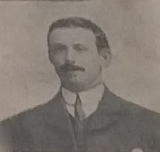
Graham Howells, Gunner, 371373, Royal Garrison Artillery. Graham was born in 1893, the son of David and Margaret Howells, of Ropewalk, Fishguard. He enlisted at Fishguard into the 171st Siege Battery, Royal Garrison Artillery, which formed part of the British forces in Italy. Graham was killed in action on 3 September 1918, aged 23, and is buried in Barenthal Military Cemetery, Italy.
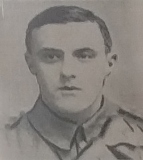
Thomas Raymond Howells, Rifleman, R/3235, King’s Royal Rifle Corps. Thomas was the son of Mark and Mary Anna Raymond Howells, of Drovers Arms, Puncheston. He enlisted at Bargoed into the army, and was posted to the 11th Battalion, King’s Royal Rifle Corps, which was attached to 59 Brigade, 20th (Light) Division. On 26 July 1915 the Division moved to the Fleurbaix Sector for trench familiarisation and training. When the Battle of Loos was launched on 25 September 1915 the Division fought a diversionary attack towards Fromelles. Later that year they moved north, and fought at the Battle of Mount Sorrel alongside the Canadian Corps. They then fought through the Somme Offensive, and took part in the advance to the Hindenburg Line in March 1917. Later that year they fought at Third Ypres, before moving south in November, to take part in the Battle of Cambrai. They remained in the area between Cambrai and St. Quentin over the winter of 1917/18 and were attacked there by the German Spring Offensive of 21 March 1918. They then fought in the retreat at the Battle of the Somme Crossings and the Battle of Rosières. Thomas died during the final offensive, on 29 October 1918, aged 28. He is buried at St. Pol British Cemetery, St. Pol-Sur-Ternoise, France. His brother, Francis Henry Howells, also fell.
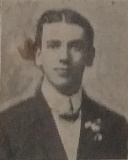
John Hughes, Private, 54156, Welsh Regiment. John was the son of John and Ann Hughes, of Porthgain. His father John was a slate worker who had moved to Pembrokeshire from North Wales and met and married their mother Ann locally. John worked as a haulier and had married Miriam Howells prior to enlisting at Swansea, into the 6th Battalion, Welsh Regiment and was posted to France in October 1916, joining the 13th Battalion, Welsh Regiment, which was attached to 114 Brigade, 38th (Welsh) Division. The Division had landed in France during December 1915 and moved to positions in the ‘Nursery Sector’ near Fleurbaix. In June they marched south, and took up positions on the Somme, where they were tasked with the capture of Mametz Wood. The first attack went in on 7 July 1916, and it was several days later that the wood finally fell to the Welsh, after they had suffered terrible casualties. The British High Command was unhappy at the time taken by the Division to capture the Wood, and so they were removed from the line and sent to hold the Canal Bank sector, north of Ypres, which is where John joined his battalion. By the beginning of December, the 13th Welsh was in the line in the Hill Top sector, repairing the trenches and carrying out nightly patrols. John was killed on 4 December 1916, when the Germans bombarded the line held by the 13th Welsh, in retaliation for a raid the previous night. The 25-year-old is buried in Essex Farm Cemetery, Belgium. His brother in law, William Howells, also fell.
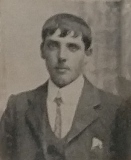
Thomas Evan James, DCM, Private, 27478, Welsh Regiment. Thomas was the son of David and Mary Ann James, of Penlanwynt, Pontfaen. He enlisted at Tonypandy into the army, and was posted to the 2nd Battalion, Welsh Regiment, which had been in France since the outbreak of war, attached to 3 Brigade, 1st Division. The Division fought in the rearguard actions from Mons, the Marne and the Aisne through to the First Battle of Ypres, where they stopped the German’s at Gheluvelt. They then fought at Aubers Ridge and Loos, and at several smaller battles throughout the Winter of 1915/16, where Thomas was to gain his Distinguished Conduct Medal ‘For conspicuous gallantry in volunteering to cut through the enemy’s wire within a few yards of his parapet, and carrying out his objective in spite of his patrol being seen and fired on. (London Gazette 15.3.16)’ The Division moved south to the Somme, where they fought in several of the minor Battles during the great offensive in 1916. Thomas was killed in action during the Battle of Bazentin, on 15 July 1916, aged 22, and is commemorated on the Thiepval Memorial, France.
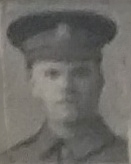
David Bevan Jenkins, Fireman, Mercantile Marine. David was born in Fishguard, the son of William Stephen Jenkins and Margaret Jenkins, of The Cottage, Fishguard. He served in the Mercantile Marine, as Fireman aboard the London registered steamer SS Franz Fischer. David was killed by an explosion when the Franz Fischer was attacked by a German Zeppelin on 1 February 1916. He was 27 years old and is commemorated on the Tower Hill Memorial, London. His brother Frederick also fell.
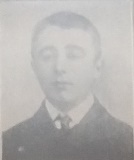
Frederick Clifford Jenkins, Boy, J/27364, Royal Navy. Frederick was born on 15 June 1898, the son of William Stephen Jenkins and Margaret Jenkins, of The Cottage, Fishguard. He enlisted into the Royal Navy, serving aboard HMS Viknor, an armed merchant cruiser of the 10th Cruiser Squadron. On 13 January 1915, while on active service in the North Sea, she struck a mine off Tory Island and sank with the loss of all hands. Frederick was just 19 years old, and is commemorated on the Portsmouth Naval Memorial, Hampshire. His brother David also fell.
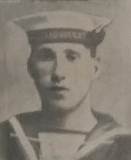
Griffith John, Private, 54323, Royal Welsh Fusiliers. Griffith was born at Llanwnda in 1896. He was raised by his grandparents, Abel and Elizabeth John at Llanwnda, before becoming a farm labourer prior to the war. Griffith enlisted at Haverfordwest into the 9th Battalion, Welsh Regiment just after the outbreak of war and was subsequently transferred to the 9th Battalion, Royal Welsh Fusiliers, which was attached to 58 Brigade, 19th (Western) Division. The Division crossed to France in July 1915, and moved to positions near Loos, where it took part in the opening attack of the Battle of Loos on 25 September 1915. The following year the Division moved to the Somme, where it took part in the second wave of the attack on Ovillers-La Boisselle on 1 July, capturing the village at heavy cost. It then fought through the Somme Battles of Pozières and the Ancre in 1916. Griffith was killed during the fighting around Regina Trench on 3 November 1916, aged 20 and is buried in Regina Trench Cemetery, France.

Owen Llewellyn Johns, MC, Lieutenant, Royal Field Artillery. Owen was born at Manorowen in 1892, the youngest of ten sons of Reverend Thomas Johns, and his wife Mary Dorothy Johns, of Manorowen. He was educated at The Perse School, Cambridge, and at Emmanuel College. Owen was commissioned into the Royal Field Artillery, and was posted to France early in 1916, attached to ‘Y’, 133rd Trench Mortar Battery, Royal Field Artillery. Owen hadn’t been at the front long when his gallantry was noticed, and he was awarded the Military Cross. His award of the Military Cross was published in the London Gazette of 23 June 1916, and read; ‘For conspicuous gallantry and devotion to duty. During a very heavy bombardment by the enemy, after firing all his ammunition, he formed up his men and placed himself at the disposal of the Infantry Commanding Officer. He proceeded under heavy fire to the firing line, into which the enemy had penetrated, to see how he could best assist. He set a fine example of cool bravery.’ Sadly Owen was killed in action on 28 June 1916, during the build up to the forthcoming Battle of the Somme. He was 24 years old, and is buried in Bouzincourt Communal Cemetery Extension, France. As far as is known, Owen is not commemorated locally, apart from on his parent’s headstone at Manorowen.
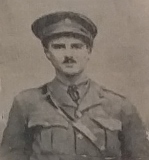
Evan Davies Jones, Lieutenant, Royal Flying Corps. Evan was the son of Sir Evan Davies Jones, Bart., and his wife, Cecilia Ann Jones, of Pentower, Fishguard. He had studied for his M.A. at Cambridge (Trinity), and joined the Royal Flying Corps, serving firstly as a Pilot with No. 2 Squadron in France. Evan was then posted to 10 Squadron, Royal Air Force, which flew the Armstrong Whitworth FK8. Evan was flying aircraft number C3522, engaged on a Close Offensive Patrol, with Observer, 2nd Lieut W Smith on 2 April 1918, when the aircraft was shot up by machine-gun fire from the ground. The Aircraft crashed and was wrecked, with both occupants killed. Evan was 25 years old, and is buried in Lijssenthoek Military Cemetery, Belgium.
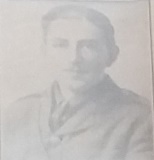
Samuel George Jones, Private, M2/121139, Army Service Corps. Samuel was born in 1889, the son of Thomas and Martha Jones, of 73, High Street, Fishguard. He was a fitter at Fishguard prior to the war, and enlisted at Goodwick on 3 September 1915 into the Army Service Corps. Samuel embarked at Devonport on 7 November 1915 aboard SS Anchises, and after disembarking at Alexandria three days later, was posted to the 569th Mechanical Transport Company, Army Service Corps. The following month the Company sailed for Basra. Samuel then served in the Mesopotamian Campaign, and died of cholera in Mesopotamia on 16 June 1916. He is buried in Basra War Cemetery, Iraq.
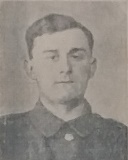
Walter Jones, Private, 33961, Welsh Regiment. Walter was born at Nevern, but had moved to Pontfaen before the war to live with his grandparents, Thomas and Mary Jones, at Penfeidr, Pontfaen. He enlisted at Fishguard into the 13th Battalion, Welsh Regiment. The battalion was attached to 114 Brigade, 38th (Welsh) Division, and had been in France since December 1915, and had fought in Flanders, at Mametz Wood on the Somme, and at Pilckem Ridge during the Battle of Passchendaele. In April 1915 the division had been moved to positions north of Albert on the Somme, and remained there until the launching of the great offensive of August 1918. Walter was wounded at Aveluy Wood just before the opening of the Battle of Albert. He died of wounds at the 131st Field Ambulance on 23 August 1918 aged 20, and is buried at Varennes Military Cemetery, France.
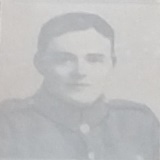
Walter Jones, Rifleman, S/3150, Rifle Brigade. Walter was born at Goodwick, the son of William and Margaret Jones, and enlisted at Fishguard into the army. He was posted to the 13th Battalion, Rifle Brigade, which was attached to 111 Brigade, 37th Division. Late in July 1915 the Division landed in France and concentrated near St Omer. They took part in the Attack on the Gommecourt Salient during the first phase of the Battle of the Somme. Two of the Division’s infantry Brigades, 111 and 112, and the Divisional pioneers were temporarily attached to the 34th Division from 6 July onwards, and Walter was killed while fighting with the 34th Division on 10 July 1916, aged 26. He has no known grave, and is commemorated on the Thiepval Memorial, France.
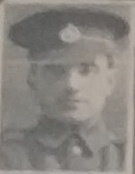
Sidney James Lawrence, Private, 52972, Welsh Regiment. Sidney was born in 1894, the son of Catherine Lawrence. He married Ruth Reynolds, of Pant-y-Ffynon, Trefin late in 1914. Sidney enlisted at Carmarthen into the army, and was posted to France during 1916, where he joined the 2nd Battalion, Welsh Regiment. The battalion had been in France since the outbreak of war attached to 3 Brigade, 1st Division, and had fought in the retreat from Mons to the Marne, before moving to Ypres later in 1914. Sydney probably joined the battalion on the Somme in the summer of 1916. They followed the German retreat to the Hindenburg Line in early 1917, and were then briefed for an operation on the Flanders Coast, and moved there during the summer of 1917. While training on the coast, the Battle of Third Ypres had stalled in the mire, and the Division were recalled to Ypres, where they fought at the Second Battle of Passchendaele. After spending another winter in Flanders, they were near Estaires when the German Spring Offensive caught them, and it was during the ensuing fighting that Sidney was killed in action, on 9 April 1918, aged 24. He is buried at Beuvry Communal Cemetery Extension, France. Ruth’s brother Joseph Reynolds also fell.
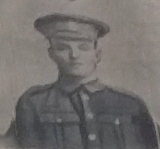
David Lewis, Gunner, 667, Royal Garrison Artillery. David was born at Pembroke, the son of Lewis Lewis and Phoebe Lewis. The family moved to Whitland where David was brought up, but he then married Mary Lewis, of Bridge Street, Lower Fishguard, and lived at Fishguard prior to the outbreak of War. He enlisted at Fishguard into the 114th Siege Battery, Royal Garrison Artillery, and served on the Western Front. David was killed in action aged 31, on 5 August 1917. He is buried on the Somme, at Péronne Road Cemetery, Maricourt, France.
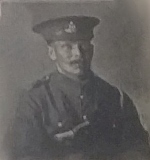
William Benjamin Lewis, Sergeant, G/25075, Duke of Cambridge’s Own (Middlesex) Regiment. William was the son of George and Mary Ann Lewis, of Prospect Place, Letterston. William enlisted at Letterston into the 13th Battalion, Middlesex Regiment, which formed part of 73 Brigade, 24th Division. The Division were in the St. Quentin sector when the German Offensive (Kaiserschlacht) began on 21 March, 1918. The British and Allied Armies mounted a desperate defensive action over the whole of the Western Front, with many units being totally annihilated by the German Stormtroopers. The first few weeks of the offensive were total chaos for the British, and William was killed in action on 28 March 1918, aged 37. His body was lost on the battlefield, and so William is remembered on the Pozières Memorial, France.
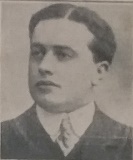
Edward Thomas Llewellyn, Lieutenant, Royal Welsh Fusiliers. Edward was the son of Thomas and Ruth Llewellyn, of Taibach, Cwm Gwaun. For several years prior to the war he had lived in 18, Porchester Gardens, Bayswater, Paddington, where he worked as a Draper. He enlisted in London into the 15th Battalion, Royal Welsh Fusiliers, which was attached to the 38th (Welsh) Division and was promoted to Sergeant before gaining a commission into the 4th (Garrison) Battalion, Royal Welsh Fusiliers on 16 April 1915. He was subsequently attached to the 9th Battalion, Royal Welsh Fusiliers, which was attached to 58 Brigade, 19th (Western) Division. The division took part in several major actions during the war, notably at the Somme in July 1916, Messines Ridge in June 1917 and at Passchendaele later that year. On 21 March 1918 was positioned near Bapaume when the Germans launched Operation Michael and over the coming days suffered terrible casualties. The battered division was transferred back to positions near Messines to recuperate but was hit again by a fresh offensive in April 1918 and after being virtually annihilated was transferred to a more peaceful sector on the Aisne, where it was unfortunately caught up in the Germans last offensive of the war. Edward had survived some terrible fighting but had been badly wounded at some time during the Battle of the Lys. He was evacuated to the base hospital at Étaples where he died of his wounds, on 18 May 1918, aged 32. He is buried in Étaples Military Cemetery, France. Edward does not appear to be commemorated on any local war memorials, but on his parents’ headstone at Jabez Chapel.
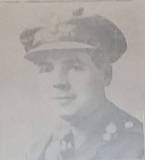
Thomas Vaughan Llewellyn, Private, 442718, Canadian Infantry. Thomas was born at Spring Hill, Dinas Cross on 15 May 1882, the son of John and Maria Llewellyn. He became a miner, and migrated to Canada prior to the outbreak of the Great War. On 17 August 1915, Tom enlisted at Vernon Camp into the Canadian Expeditionary Force. Tom then embarked for Britain as one of a batch of reinforcements for the 2nd Battalion (Eastern Ontario), CEF, attached to 1st Canadian Brigade, 1st Canadian Division. The Battalion had arrived at Plymouth from Canada on 14 August 1914, aboard the SS Cassandra. After months of training, the Battalion landed with the 1st Canadian Division in France during February 1915, and took the line at Ypres, where they were among the first troops to have ever been attacked with poison gas. After a desperate defence, which saw the Canadians valiantly hold their line, they remained at Ypres over the coming months, and saw plenty of action during the Second Battle of Ypres. The Division moved to the Somme in July 1916, which is probably where Tom joined his Battalion, and took up positions near Flers. On 9 September 1916 the 2nd Battalion moved back into the front line, relieving the 4th Battalion. The battalion moved into positions, and launched an attack on the German lines at Flers at around 4.48 p.m. By 5.27 p.m. the Canadians had attained their objectives, although a large number of men had been cut down by German machine-gun fire. The dead were buried the following morning, before the 2nd Battalion was relieved and returned to billets at Albert. Among the dead was Tom. He was 38 years old, and is now buried at Adanac Military Cemetery, Miraumont, France.
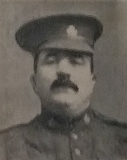
Marteine Kemes Arundel Lloyd, Captain, Grenadier Guards. Marteine was born at Bronwydd in 1890, the son of Sir Marteine Owen Mowbray Lloyd, 2nd Baronet, and Lady Katharine Helena of Bronwydd, Henllan, Cardiganshire. He was educated at Lyndhurst and Eton, and was commissioned into the 2nd Battalion Grenadier Guards. The battalion had been in France since the outbreak of war, taking part in the retreat from Mons to the Marne. It took part in the First and Second Battles of Ypres, before being attached to the 4th Guards Brigade, 2nd Guards Division. The Guards Division had fought at the Battle of Loos, and had moved south to the Somme in 1916, where they fought at Ginchy. Marteine was killed in action on 15 September 1916, aged 26, and is buried at Delville Wood Cemetery, Longueval, France.
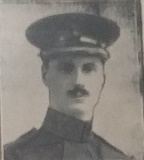
William Harries Morgan, Private, 33798, Welsh Regiment. William was born at Llanwnda in 1894, the son of Mary Morgan and enlisted at Fishguard into 8th Battalion, Welsh Regiment. The battalion was attached to 40 Brigade, 13th (Western) Division, which landed on Cape Helles, Gallipoli in July 1915. They fought on the Peninsula until being evacuated on 8 January 1916 and by 31 January were concentrated at Port Said, where they held forward posts in the Suez Canal defences. On 12 February 1916 the Division began to move to Mesopotamia, to strengthen the force being assembled for the relief of the besieged garrison at Kut al Amara. By 27 March, the Division had assembled near Sheikh Saad and came under orders of the Tigris Corps, and then took part in the attempts to relieve Kut. However, after these efforts failed and Kut fell, the British force in the theatre was built up and reorganised. The Division then fought at the Battle of Kut al Amara, then at the capture of the Hai Salient and the capture of Dahra Bend. They took part in the passage of the Diyala; in the pursuit of the enemy towards Baghdad, and part of the Division were the first British troops to enter Baghdad. William died during the offensive into Mesopotamia on 4 July 1916. He was 22 years old, and is buried in Basra War Cemetery, Iraq.
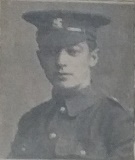
John James Morris, Bombardier, 371094, Royal Garrison Artillery. John was born in Fishguard in 1896, the first son of Benjamin and Martha Morris of 8, Wallis Street, Fishguard. John enlisted at Fishguard into the Pembrokeshire Battery, Royal Garrison Artillery, and was posted to the 16th Heavy Battery, which was attached to the 16th (Irish) Division. The Division concentrated around Bethune, and served at the Battle of the Somme from July 1916 until moving North to Ypres, where they fought at the Battle of Passchendaele. John was killed in action aged 21 on 11 September 1917 alongside two other men of his Gun Battery. He is buried in Bard Cottage Cemetery, Belgium.
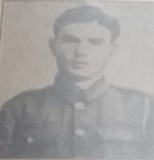
Thomas Morse, Sergeant, M/321457, Army Service Corps. Tom was born at Manorowen, Pembroke, the son of Thomas and Mary Thomas Morse. The family later resided at Durbach Farm, Durbach. Tom was a traction engine-driver before the war, and attested to serve with the Motor Transport arm of the Army Service Corps in December 1915, being called up in May 1917. Not much is known of Tom’s service in the War, but it is doubtful if he made it to France, serving instead with ‘V’ Company, ASC at Cambridge. Sadly, Tom became ill with pneumonia towards the end of the war, and died at Colchester Military Hospital on 26 October 1918, aged 32. He is buried in Fishguard (Hermon) Baptist Burial Ground. His service papers show that money was being stopped from his wages for an illegitimate child, the son of Martha Nicholas, of Jordanston, Pembroke, born on 23 July 1913. No more is known of Tom’s son.
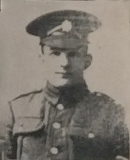
Hugh Kirk Nethercleft, Second Lieutenant, South Wales Borderers. Hugh was born in Croydon on 30 July 1886, the son of Edward William and Mary Rose Nethercleft. He worked for the Great Western Railway prior to the war, and resided at Brynhaf, Goodwick. Hugh was commissioned into the 2nd Battalion, South Wales Borderers, which was attached to 87 Brigade, 29th Division. The Division had seen much service on Gallipoli before being moved to France in 1916, taking up positions on the Somme, near Beaumont Hamel, where it suffered terrible casualties during the Somme Offensive. By May 1917 the Battalion was at Arras, and Hugh joined them here, at Duisans. He fought with the battalion here and during their next major actions during Third Ypres in August, September and October 1917. At the beginning of November, the Division moved to the Cambrai sector, and took part in the Battle of Cambrai. Hugh was wounded during a German counter-attack, and died of his wounds at Rouen on 25 December 1917, aged 31. He is buried in St. Sever Cemetery, Rouen, France.
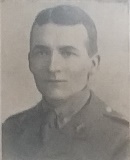
Arthur Edward Nichols, Gunner, 371340, Royal Garrison Artillery. Arthur was born at Newport in 1892, and was the Husband of Rosena Nichols of 4, King Street, Newport. He enlisted at Newport into the 275th Siege Battery, Royal Garrison Artillery. Not a lot is known of Arthur’s service, but he was wounded at Ypres during the Battle of Passchendaele, and died of wounds at the Casualty Clearing Station at Lijssenthoek on 14 November 1917, aged 25. He is buried at Lijssenthoek Military Cemetery, Belgium.
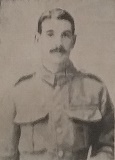
Augustus Charles Owen, MC, Second Lieutenant, Somerset Light Infantry. Augustus was the son of Sir Hugh Charles Owen and Lady Martha Owen, of Laurel Cottage, Goodwick. He was commissioned into the Somerset Light Infantry, and served with their 8th Battalion, attached to 63 Brigade, 21st Division. The battalion landed in France on 10 September 1915 and fought there for the remainder of the war. Augustus was awarded the Military Cross for his bravery during the desperate fighting suffered by the division early in 1918, his citation reading ‘For conspicuous gallantry and devotion to duty. At a critical moment he held his position with a small party of men against an enemy attack delivered after heavy bombardment. By his fine example of courage and determination he enabled the line in that part of the field to be restored’. Sadly Augustus was killed during the Battle of the Aisne, on 6 August 1918, aged 23. He is buried in St. Amand British Cemetery, France.
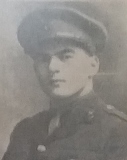
David Christopher Parry-Davies, Captain, South Wales Borderers. David was born in 1899, the son of David Rhys and Elizabeth Parry-Davies, of The Rectory, Puncheston. He was commissioned into the South Wales Borderers on 31 October 1914, and promoted to Temporary Captain on 23 December 1915. He was posted to France on 24 September 1916, at first joining the 6th Battalion, South Wales Borderers. When the 2nd Battalion, South Wales Borderers moved to France from Egypt on 15 March 1916, David was transferred to them. They had been at Gallipoli in 1915 attached to 87 Brigade, 29th Division, and upon transferring to France took up positions at Beaumont Hamel. In April 1916, the 2nd SWB were the subjects of a raid by the Germans which caused heavy casualties, and resulted in a large number of men being taken prisoner. As a retaliatory gesture, on 29 April a Company of the battalion moved into No Man’s Land behind an artillery bombardment, to exact their revenge. Unfortunately the men were caught in their own bombardment, and suffered heavy casualties. David was badly wounded here, and died at No. 4 Casualty Clearing Station on 10 May 1916. He is buried at Beauval Communal Cemetery, France.
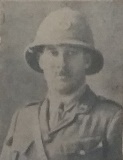
Thomas John Peregrine, Gunner, 25989, Royal Field Artillery. Thomas was born at Newport, the son of David and Elizabeth Peregrine, of Goat Street, Newport. He enlisted at Goodwick into the Royal Artillery, and was promoted Shoeing Smith before landing in France on 28 August 1915 with ‘A’ Battery, 74th Brigade, Royal Field Artillery. Thomas saw his first major action at the Battle of Loos from 25 September 1915 onwards. He was killed in action at Loos on 5 October 1915, aged 23. Thomas is commemorated on the Loos Memorial, France.
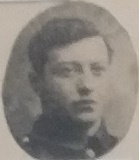
James John Phillips, Private, 3804, Welsh Regiment. James was the son of William and Sarah Phillips, of Bwlch-Y-Rhos, Goodwick. He married Edith Tegan early in 1914, and the couple briefly set up home at 5, Jubilee Terrace, Wallis, Fishguard. At the outbreak of war, James enlisted at Fishguard into the 1/6th Battalion, Welsh Regiment. The battalion was one of the first territorial units to move to France in August 1914. Initially, in late 1914 and early 1915, they were on lines of communication and in July 1915 were based in the Locre and Kemmel area, facing the Germans who were on the high ground at Spanbroekmolen. The battalion was in the trenches, but also doing work repairing trenches etc. On 5 July 1915 the battalion was attached to 84 Brigade, 28th Division, and took part in the Battle of Loos. On 23 October 1915 the battalion was transferred to 3 Brigade, 1st Division, becoming the Divisional Pioneer Battalion on 15 May 1916, before moving to the Somme, where they fought throughout the whole battle. James was killed in action during the latter stages of the offensive, on 31 December 1916, aged 23. He is buried in Warlencourt British Cemetery, France.
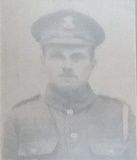
John Edward Reynolds, Private, G/19196, Royal Sussex Regiment. John was the son of John and Hannah Reynolds, of 11, Plasygamil, Goodwick. He enlisted at Fishguard in June 1915 into the 15th Battalion, Welsh Regiment, which was the Carmarthen Pals Battalion. John was discharged as underage in February 1916. When he passed 18, John rejoined, and was posted to the 9th Battalion, Royal Sussex Regiment, which was attached to 73 Brigade, 24th Division. The Division had been in France since August 1915, and had fought at Loos that year, the Somme in 1916 and at Arras and Ypres in 1917. John would have joined the battalion after the winter of 1917/18, when the division was at positions north of St. Quentin. The division was here when the Germans launched their Offensive on 21 March 1918, fighting a famous defence of the village of Le Verguier. They then fought a brave rearguard action at the Somme Crossings, and then at the Battle of Rosières and the Battle of the Avre, before being moved to Flanders. Here the Division saw heavy fighting at the First Battle of Kemmel, before moving south again, where they fought during the great offensive, at the Battle of Cambrai, when they attacked the Hindenburg Line. After the German defences had been breached, the Division pushed on, taking part in the Pursuit to the Selle, the Battle of Valenciennes, the Battle of the Sambre and the Passage of the Grand Honnelle. John was killed just a week prior to the Armistice, on 4 November 1918. He was just 18 years old, and is buried in Wargnies-Le-Petit Communal Cemetery, France.
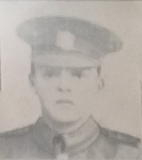
William Rees Reynolds, Second Lieutenant, Australian Infantry. William was the only son of Captain William Rees Reynolds, and Mary Reynolds, of Cilwenan Hill, Dinas Cross, Pembrokeshire, and of ‘The Astor’, Macquarie Street, Sydney, Australia. William was educated at Llandovery from 1909 until 1910, and was also educated at the Church of England Grammar School, North Sydney, Australia. William’s intention was to be a farmer, and on completion of his schooling, he enrolled for a course of Instruction at Wagga Experimental Farm. However, with the advent of War, instead of chasing his dream, William enlisted in the Australian Imperial Force on 18 June 1915, joining the Australian Army Medical Corps at Sydney. William was later posted to England, and became an Instructor, serving on Salisbury Plain. However, William wanted action, and so transferred into the Infantry, and was soon commissioned as Second Lieutenant into the 33rd Battalion, AIF, which was part of the 3rd Australian Division. The Battalion had to wait until the emphasis of British and Dominion operations switched to the Ypres Sector of Belgium in mid-1917 to take part in its first major battle; which was the battle of Messines, launched on 7 June. The battalion held the ground captured during the battle for several days afterwards and was subjected to intense artillery bombardment. One soldier wrote that holding the line at Messines was far worse than taking it. The battalion’s next major battle was around Passchendaele on 12 October. The battlefield, though, had been deluged with rain, and thick mud tugged at the advancing troops and fouled their weapons. The battle ended in a disastrous defeat. The 33rd Australian Battalion was called up to attack Crest Farm, where a previously captured pill-box had been re-taken by the enemy. It was in this attack that William was killed, along with five fellow officers of the Battalion. He was 24 years old, and has no known grave, and so is commemorated on the Ypres (Menin Gate) Memorial, Belgium.
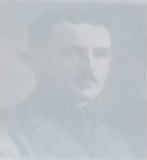
William Mathias Richards, Pioneer, 130559, Royal Engineers. William was born at Mathry on 21 November 1881, the son of Joseph and Hannah Richards. The family later resided at Fishguard, but William married, and lived with his wife Hannah Richards, at 27, Cranbury Avenue, Southampton. William enlisted ‘In the Field’, into the South Wales Borderers, but was transferred into the Royal Engineers, serving in ‘F’ Special Company. The Special Companies were Chemical Warfare Engineers, which handled Gas Shells to be fired from Stokes Mortars. William was killed in action on 6 April 1917, during the build up to the Battle of Vimy Ridge, part of the main Battle of Arras, while his Company were situated in the Souchez Valley. He was aged 36, and is buried in Zouave Valley Cemetery, Souchez, France.
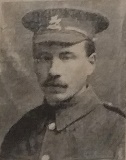
David John Roach, Private, 4443, Royal Fusiliers. David was the son of John and Elizabeth Roach, of 50, Monk Street, Aberdare. His mother Elizabeth died by around 1900, and in 1901 his father married Ann Williams, before moving the family to Dinas. By the time of the outbreak of war, David was living in London, where he enlisted into the 23rd Battalion, Royal Fusiliers. The Battalion was known as the Sportsmen’s Battalion, due to the high number of athletes and footballers in its ranks, and was attached to 99 Brigade, 2nd Division. One of the first Divisions to move to France, the 2nd Division remained on the Western Front throughout the war. They moved to Belgium, where they fought at the Battle of Mons, and retreating southwards, fought at the Affair of Landrecies, the Rearguard Actions of Villers-Cotterets, and at the Battle of the Marne where the German offensive was stopped. The Germans retreated north, and the BEF met them, fighting at the Battle of the Aisne. The 2nd Division were then moved to Flanders, where they fought at the First Battle of Ypres, when the German sweep through Flanders was stopped, and remained there throughout the first winter of the war. In 1915 they took part in the Battle of Festubert, and in September fought at the Battle of Loos, and subsequent action of Hohenzollern Redoubt. David joined the battalion in France as reinforcement early in 1916. In the summer of 1916 the Division were on the Somme, and took part in the Battle of Delville Wood. David was killed in action here on 27 July 1916. He was 19 years old, and was buried at Dive Copse British Cemetery, Sailly-le-Sec. His elder brother Tom also fell.
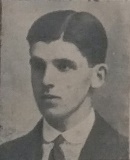
George Roach, Private, 25084, Welsh Regiment. George was born at Llangloffan in 1897, the son of John and Esther Roach. He enlisted at Bridgend into the Welsh Regiment, and was posted to the 15th Battalion, Welsh Regiment, known as the Carmarthen Pals battalion, which was attached to 114 Brigade, 38th (Welsh) Division. George probably joined the battalion in France after the fighting at Mametz Wood in July 1916. The Division moved to positions at Boesinghe, where it held the trenches along the Canal Bank over the coming months. On 31 July 1917 the Division launched its attack on Pilckem Ridge, and captured all its objectives, before withdrawing to rest. The 15th Welsh remained in the line and took part in the Battle of Langemarck, before the entire Division was moved to the Armentieres area. George was killed at Armentieres on 11 March 1918, aged 20, after the Germans raided the 15th Welsh lines at Houplines. George was buried at Cite Bonjean Military Cemetery, Armentieres, France.
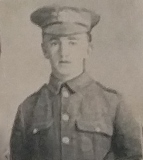
Edgar Llewellyn Roberts, Private, 1271, Guards Machine Gun Regiment. Edgar was born in Fishguard, the son of Llewellyn and Hannah Roberts, of Anchor House, Fishguard. He enlisted at Fishguard into the Welsh Guards, and served with the 1st Battalion, Welsh Guards in France from May 1915 onwards, seeing action at Loos, the Somme, and at Passchendaele. On 1 March 1918 the Guards Division formed four Machine-Gun Companies, which were then reformed by Royal Warrant into the Guards Machine Gun Regiment on 10 May 1918. Edgar was transferred from the Welsh Guards into the 5th Battalion, Guards Machine Gun Regiment, but was seriously wounded not long after. He died of wounds at Northampton on 14 May 1918, aged 28 and is buried at Fishguard (Tabernacle) Congregational Chapelyard.
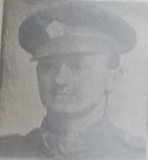
William Rowland Roberts, Lance Corporal, 72741, Sherwood Foresters. William was born in Scleddy on 17 March 1891, the son of William and Ann Roberts, of The Post Office, Dwrbach. He enlisted at Haverfordwest on 27 January 1915 into the Army Service Corps, but later transferred into the 2nd Battalion, Sherwood Foresters (Notts and Derby Regiment), part of 71 Brigade, 6th Division, in November 1917. The Division fought at Hooge, and at the Somme, before fighting at Loos and the Battle of Cambrai, where William joined them. In spring 1918 they were in Flanders, and fought in the Battles of Kemmel, where William was killed in action on 19 April 1918, aged 27. Due to the terrible conditions, and the ferocity of the fighting at the time, his body was lost, and so He is commemorated on the Tyne Cot Memorial, Zonnebeke, Belgium.
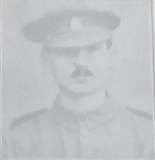
Reginald Archibald Sharp, Second Lieutenant, Royal Garrison Artillery. Reginald was the son of Captain Richard Sharp and Hannah Sharp, of Goodwick. He married Lilian Mary Jackson on 28 December 1912, and the couple lived at 7, Lynsted Lane, Teynham, Sittingbourne, Kent. He was commissioned into the Royal Garrison Artillery, and was posted to France to join their 47th Siege Battery, which was on the Somme. Reginald was killed on the Somme, during the assault on Delville Wood, on 2 September 1916 when his battery was in support of the assaulting troops. He was 28 years old, and is buried in Péronne Road Cemetery, Maricourt, France.
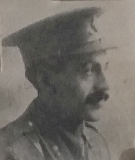
Arthur George Thomas, Private, 143446, Royal Engineers. Arthur was the son of David Thomas and Sarah Thomas (nee Miles), of Tynewydd, Fishguard. He served with the 130th Field Company, Royal Engineers which was attached to the 25th Division. Very little is known of Arthur’s war but he survived the conflict only to die of influenza at Caudry on 7 December 1918, aged 21. Arthur is buried in Caudry British Cemetery, France. His brother John Miles Thomas also fell. Arthur is not commemorated on the main Fishguard cenotaph like his brother, but at Hermon Chapelyard.
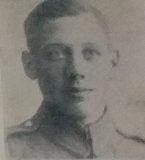
David Thomas, Private, 117838, Machine Gun Corps. David was born at Newport and was the husband of Margaret Thomas. He enlisted there into the Welsh Regiment, with the service number 203063. He was later posted to the 21st Battalion, Machine Gun Corps, which was attached to the 21st Division. The division had been in France since September 1915, and had taken part in most of the major battles thereafter, at Loos in September 1915 and on the Somme in 1916. During 1917 the division fought at Arras, Passchendaele and at Cambrai. The division was one of the units hit by the German Spring Offensive on the Somme in March 1918, fighting at the Battle of St Quentin and the First Battle of Bapaume, before being evacuated to Flanders to rest. Unluckily though, the Germans launched a fresh offensive on the Lys in April 1918, and the division was caught up in the thick of the fighting again, during the Battle of Messines, and the Second Battle of Kemmel. The battered division now moved south to rebuild, but again was unlucky, as the Germans launched a fresh offensive on the Chemin-des-Dames, and the division was caught up in the action again, fighting in the Battle of the Aisne, before moving north to the Somme sector, where they took part in the great offensive which ended the war. At some time in 1918 David was taken prisoner by the Germans, and brought to a POW Camp in Germany. He died in captivity on 18 October 1918, and is buried in Berlin South Western Cemetery, Germany.
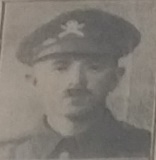
Edwin Thomas, Private, 302289, Manchester Regiment. Edwin was born in 1893, the son of Thomas and Dinah Thomas, of Glyn View, Dinas. He enlisted at Cardiff into the Army, and joined the 2/8th Battalion, Manchester Regiment, which was attached to 199 Brigade, 66th (2nd East Lancs) Division. The Division was a Territorial Division, and was on home service for the majority of the war. It concentrated on the Western Front by 16 March 1917 and moved to the Flanders Coast. At the end of September 1917 they moved to Ypres, and took part in the Battle of Poelcapelle. Edwin was killed in action at Poelcapelle on 8 October 1917. He was 24 years old, and is commemorated on the Tyne Cot Memorial, Belgium. His brother Morgan also fell.
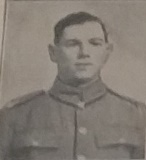
Gwilym Morris Thomas, Private, 47892, Yorkshire Regiment. Gwilym was born at Henry’s Moat, and was the Husband of Mary Jane Thomas, of Plasybarlo, Login. He enlisted at Carmarthen into the Royal Engineers, but later transferred into the 12th Battalion, Yorkshire Regiment, which was the Pioneer Battalion to the 40th (Bantam) Division. The Division moved to France in June 1916, and saw action at Loos, before moving to the Somme, and fighting at the Ancre. They followed the German withdrawal to the Hindenburg Line in early 1917, and then fought at the Battle of Cambrai, attacking Bourlon Wood. Gwilym was killed in action at Cambrai on 28 November 1917 aged 31. He is remembered on the Cambrai Memorial, Louverval.
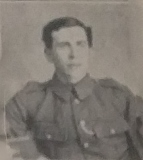
James Thomas, Corporal, 79635, Royal Garrison Artillery. James was born at Fishguard in 1882, the son of Rosa Thomas. He resided at Abertillery prior to the war, and married Edith May Everson there on 11 June 1913. The family then moved to Cheltenham, where James worked as a Grocers Assistant. He enlisted there into the Royal Garrison Artillery on 12 May 1916. On 9 January 1917 James was posted to France with the 241st Siege Battery, Royal Garrison Artillery. The Battery was at Arras during the spring of 1917, and took part in the Battle of Arras. James was wounded there, before being brought back to the 19th Casualty Clearing Station at Étrun, where he died of Wounds on 1 June 1917, aged 34. James is buried there at Duisans British Cemetery, Étrun, France.
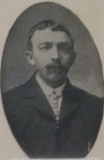
John Miles Thomas, Private, 29500, South Wales Borderers. John was born in 1894, the son of David and Sarah Thomas (nee Miles), of Tynewydd, Fishguard. He enlisted at Tonyrefail into the army. He was posted to the 2nd Battalion, South Wales Borderers, which had fought at Tientsin, China, before being recalled to Britain, where it joined 87 Brigade, 29th Division. The Division took part in the Gallipoli landings, landing at Helles on 25 April 1915. After a hard campaign at Gallipoli, they were evacuated on 2 January 1916 and were shipped to Marseilles via Egypt, arriving on 29 March 1916. The 2nd SWB fought at Beaumont Hamel on 1 July 1916, suffering heavy casualties, and then at the Battle of Arras, before moving to Ypres, where they fought in the Battle of Langemarck. John was killed during the fighting here, on 16 August 1917, aged 23. His body was lost in the mud of Flanders, and he is commemorated on the Tyne Cot Memorial, Belgium. His brother Arthur also fell, and is commemorated on the memorial at Hermon Chapelyard, not on the main cenotaph.
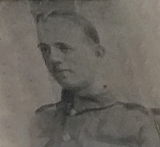
Joseph Henry Thomas, Private, 62360, Welsh Regiment. Joseph was born in 1888, the son of Benjamin and Lettice Thomas, of 15, Smyth Street, Fishguard. He enlisted there into the army on 23 February 1916, and was posted to France on 29 March 1918, where he joined the 9th Battalion, Welsh Regiment. The Battalion had been in France since July 1915, attached to 58 Brigade, 19th (Western) Division, and had taken part in the Battle of Loos in 1915, and the Battle of the Somme the following year. In the summer of 1917 the Division took part in the Battle of Messines, and the Battle of Passchendaele. On 21 March 1918 the Division was caught by the German Spring Offensive, and suffered terrible casualties over the coming days, before being withdrawn to Ploegsteert Wood to rebuild. However, a fresh attack hit them there, and the Division suffered terrible casualties in Flanders during the chaotic first few weeks of the attack. Joseph was killed in action in Flanders on 18 April 1918, aged 29, and is buried at Haringe (Bandaghem) Military Cemetery, Belgium.
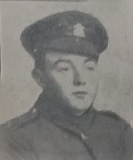
Morgan Thomas, Private, 307393, Sherwood Foresters. Morgan was born at Mathry in 1892, the son of John and Dorothy Thomas. After 1901 the family had moved to 22, Brodog Terrace, Fishguard. Morgan enlisted at Fishguard into the army, and was posted to the 2/8th Battalion, Sherwood Foresters (Nott’s and Derby Regiment), part of 176 Brigade, 59th Division. The Division were sent to Ireland in April 1916 to quash the rebellion there, before landing in France in February 1917. In France they followed the German withdrawal to the Hindenburg Line, before moving to Ypres, where they fought in the Battle of the Menin Road. The Division turned north, to take Polygon Wood, alongside the 4th Australian Division, and it was at Polygon Wood that Morgan was killed in Action, on 26 September 1917, aged 25. He is commemorated on the Tyne Cot Memorial, Zonnebeke, Belgium.
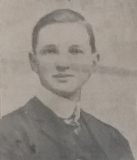
Joseph Waugh, Private, 55317, Royal Fusiliers. Joseph was born in Fishguard, the son of John and Mary Clara Ann Waugh, of Brig-y-Don, High Street, Fishguard. He enlisted at Fishguard into the Army Service Corps, and then transferred into the 8th Battalion, Royal Fusiliers, which was attached to 36 Brigade, 12th (Eastern) Division. The Division moved to France at the end of May 1915, fighting at Ploegsteert and Loos that year. They fought on the Somme in 1916, before moving back to Arras, and fought in the Battle of Arras, at the Scarpe, where Joseph was killed in Action, aged 24, on 3 May 1918. He is commemorated on the Arras Memorial, France.
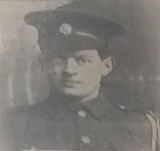
F. Williams, Corporal. The memorial contains a photograph named to Corporal F. Williams, of Puncheston. The cap badge he is wearing is of the Welsh Regiment, however there is no one of that name, rank and regiment from Pembrokeshire who fell, and no one of that name on the Puncheston memorial. He is not even named on the list of those from Puncheston who served and returned from the war.
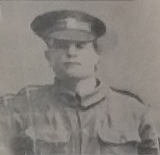
Henry Byron Williams, Second Engineer, Mercantile Marine. Henry was born in Battersea in 1886, the son of Isaac Benjamin Williams and Jane Williams. His father was from Trevine and later moved the family to Scleddy Park, Manorowen. Henry married Mary Muriel Evans, of 197, Coventry Road, Ilford, Essex in 1916. He was an engine fitter and served with the Mercantile Marine, aboard SS Polperro. On 19 July 1918 Polperro was steaming from Marseilles for Sicily, through the Strait of Sicily, when she was torpedoed by the German submarine UC-54. The ship managed to limp to safety in Tunisia but three men were killed in the explosion, one of whom was Henry, who was 32 years old. Henry and two other men were buried at Bizerta Cemetery, Tunisia. (The memorial shows him as W. B. Williams, but thanks to Susan Hughes for identifying Henry as probably the correct man).
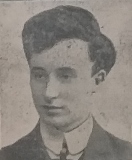
Thomas Henry Williams, Private, 267123, Welsh Regiment. Thomas was born at Abercastle on 9 December 1886, the son of John and Margaret Williams, of Skeddy, Fishguard, and the husband of Mary Anne Williams, of Park Cottage, Dwrbach. He enlisted at Fishguard on 30 May 1916 into the 17th Battalion, Welsh Regiment, a Bantam Battalion which formed part of 119 Brigade, 40th Division. The Division landed in France during June 1916, and fought on the Ancre, before moving toward the Hindenburg Line following the German withdrawal in early 1917. Thomas joined the Battalion on 7 December 1917, when the Division was in the thick of the Battle of Cambrai. This is where John was sadly killed in Action, aged 30, on 27 December 1917. He is buried in St. Leger British Cemetery, France. Sadly, he left behind his widow Mary Ann, and eight children, one of whom, William John Williams, was sadly killed during World War Two.
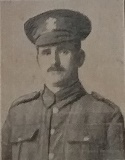
William David Williams, Private, 36949, Welsh Regiment. William was the son of Thomas and Maria Williams, of Llangloffan Cross. He enlisted at Ferndale into the South Wales Borderers, but after landing in France on 5 May 1915 was transferred into the 2nd Battalion, Welsh Regiment, which was attached to 3 Brigade, 1st Division. The Division had been one of the first to arrive in France, fighting at the retreat from Mons to the Marne, where the Germans were stopped. They then fought at the Aisne, and at Chivy, before being moved north to Ypres. Here they fought at the First Battle of Ypres, where they again stopped the German Offensive, before wintering in Flanders. The following year saw them in action again at the Battle of Aubers, before moving South to Loos, where they fought during the Battle of Loos, and the action at the Hohenzollern redoubt. Again they were required for a major offensive, moving south to the Somme, where they fought during the opening of the Somme Offensive at the Battle of Albert. William was wounded on the Somme, and died on 12 September 1916, aged 24. He is buried at Millencourt Communal Cemetery Extension, France.
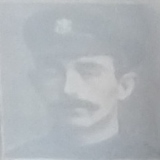
Herbert Charles Wray, Private, 33799, Welsh Regiment. Herbert was born at Bollington, Hampshire, and resided at Fishguard prior to the War. He enlisted at Fishguard into the army, and was posted to the 9th Battalion, Welsh Regiment, which was attached to 58 Brigade, 19th (Western) Division. The Division saw its first major action during the Battle of Loos on 25 September 1916. They moved to the Somme early in 1916, where they took part in the assault on Ovillers-la-Boisselle on 1 July 1916. Herbert was killed in action at Ovillers, on the opening day of the Battle of the Somme, on 1 July 1916. He is commemorated on the Thiepval Memorial, France.
